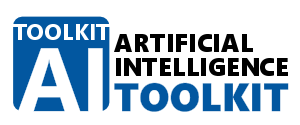One of the most complex fields of machine learning is natural language processing (NLP). Automatic speech recognition is a sub-category of NLP. The aim of ASR is to provide a word sequence (often called a transcription) which corresponds to an input speech. The input speech is captured in the form of a speech waveform (acoustic signal), which is the combination of sound waves representing the change in air pressure over time (the creation and spread of sound - theoretical physics of sound waves).
There are many useful applications of ASR, for example, voice dialing, call routing (e.g., in order to automate call centers), data entry by speech, command and control (computers, vehicles, appliances…), etc. A GPS in a car or a smart phone which can be commanded by human speech is a good example of ASR.
The open source software VoiceBridge in the AI-TOOLKIT can be used to develop speech recognition applications with only a few lines of C++ code. The distribution of VoiceBridge contains two voice recognition application examples. The ‘Yes-No’ example trains an ML model for recognizing people saying ‘yes’ or ‘no’. The ‘LibriSpeech’ example trains a more realistic ML model to recognize English speech. More information about VoiceBridge can be found in the description of the software.
By using VoiceBridge you can train an ML model for a specific language which can transcribe the spoken words into written text. The transcription may be used for many useful applications in different sectors. Transcribing spoken text is the first step in comprehension and acting on the spoken text (e.g. answering or initiating an action).
This article is a slightly modified excerpt from the book “The Application of Artificial Intelligence”. If you are interested in the subject then it is strongly recommended to read the book which contains many more details and real world case studies for several sectors and disciplines! The book explains several examples step-by-step by using the AI-TOOLKIT. The book is going through the publishing process at the time of writing this article. You may use the contact form for info about pre-ordering the book.
| Learn about the application of Artificial Intelligence and Machine Learning from the book "The Application of Artificial Intelligence | Step-by-Step Guide from Beginner to Expert", Springer 2020 (~400 pages) (ISBN 978-3-030-60031-0). Unique, understandable view of machine learning using many practical examples. Introduces AI-TOOLKIT, freely available software that allows the reader to test and study the examples in the book. No programming or scripting skills needed! Suitable for self-study by professionals, also useful as a supplementary resource for advanced undergraduate and graduate courses on AI. More information can be found at the Springer website: Springer book: The Application of Artificial Intelligence. |
 |











